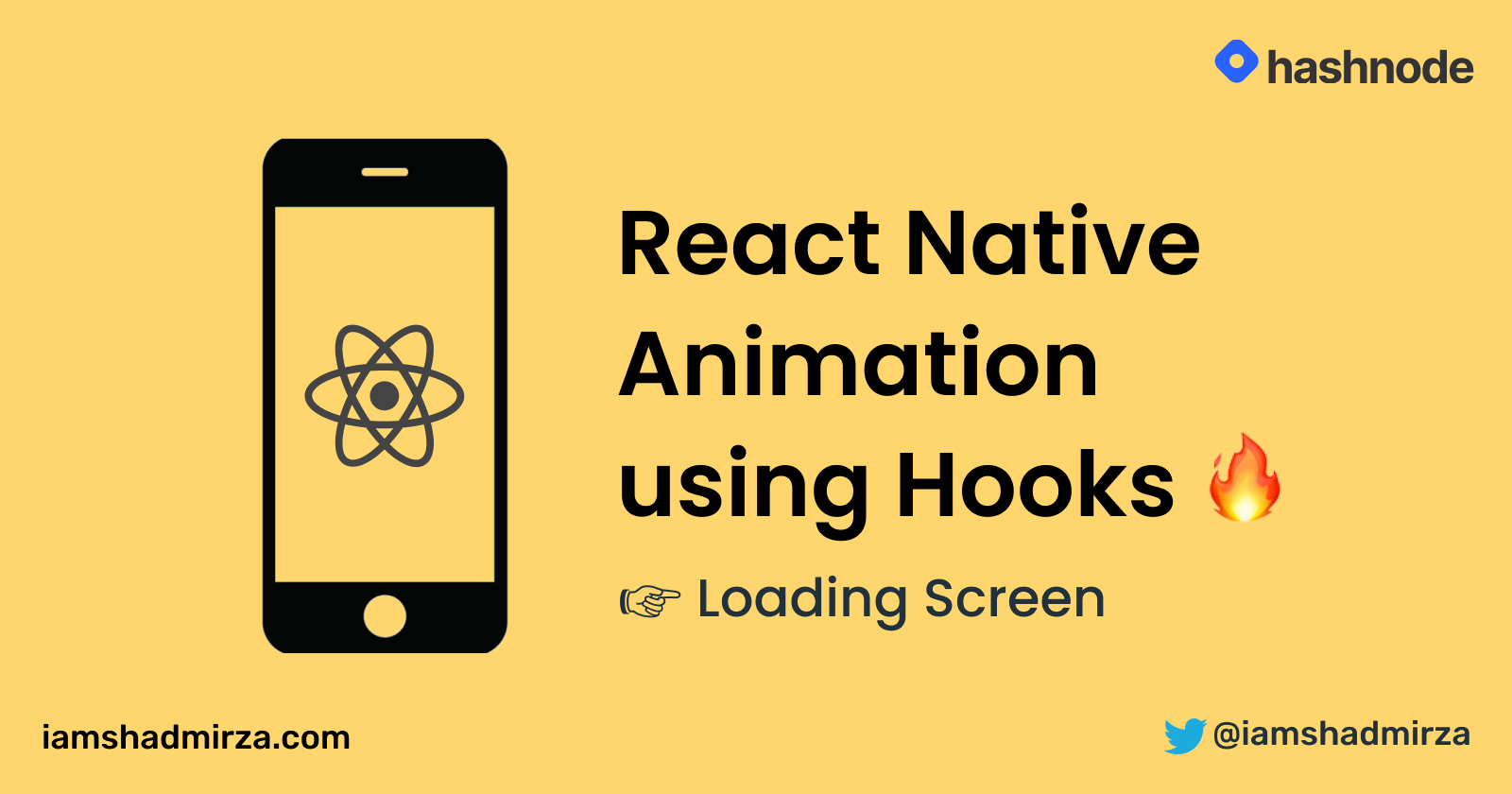React Native Animation using Hooks: Loading Screen

Hey there, I guess you decided to read this blog to learn a few things about React Native Animation and Hooks. You’re in the right place.
We are going to make a basic rotation animation using the React Native Animated library. This will contain a “Twitter” logo at the center which will rotate to create a loading effect. We will incorporate the whole logic inside a hook. Let’s start.
Step 1: Create a Loading Screen
We first need a loading screen to animate.
- Add a View with
flex: 1, it will cover the whole screen. - Add Twitter logo (or any image you like) with a Loading… text.
- Place them at the center of the screen.
// App.js
import React from 'react'
import { StyleSheet, Text, View } from 'react-native'
import Logo from './twitter.png'
export default function App() {
return (
<View style={styles.container}>
<Image
style={[styles.image]}
source={Logo}
resizeMode="contain"
/>
<Text style={styles.textMargin}>Loading tweets...</Text>
</View>
)
}
const styles = StyleSheet.create({
container: {
flex: 1,
justifyContent: 'center',
alignItems: 'center',
},
image: {
width: 100,
height: 100,
},
textMargin: {
marginTop: 30,
fontSize: 18,
},
})You may have noticed that Image style is an array. This is because we are going to add styles to rotate the image in a while.
Step 2: Create useRotation Hook
Create a file useRotation.js and follow along. This will contain 4 steps:
1) Create Animated value
What’s an Animated value 🤔?
This will be the initial value created via the Animated library. We will update this value with Animated API and hook up the changes with styles of the Image to create a fluid animation.
import { useRef } from 'react'
import { Animated } from 'react-native'
export default function useRotation() {
const animation = useRef(new Animated.Value(0)).current
return null
}We are using
useRefhook as this ref object’s current property is initialized as the given argument (Animated value) and persists throughout the component lifecycle. UsinguseStateis not recommended here.
2) Animate the value using Animated API.
Animated API gives us a bunch of methods to mutate the animated value without much trouble. Some of the methods are timing, spring, decay, etc. You can read more on the Official Documentation.
We will use Animated.timing() to change the value in a particular duration and then Animated.delay() to give a pause before starting to rotate again. Then we will use Animated.sequence() to add these two animations in aa array to create a sequence.
import { useRef } from 'react'
import { Animated } from 'react-native'
export default function useRotation() {
const animation = useRef(new Animated.Value(0)).current
function startAnimation() {
Animated.sequence([
Animated.timing(animation, {
toValue: 1,
duration: 750,
useNativeDriver: true,
}),
Animated.delay(300),
], { useNativeDriver: true })
.start(() => {
animation.setValue(0)
startAnimation()
})
}
return null
}Animated.sequence takes an array of animated to execute one after another.
Animated.timing takes the animated value (initialized 0 in this example) as the first argument and animate to toValue provided (will change to 1 in this example) inside an object in the second argument with a specified duration.
Animated.delay takes a number of milliseconds which will delay the next animation.
After adding all these, we will start the animation by calling .start()